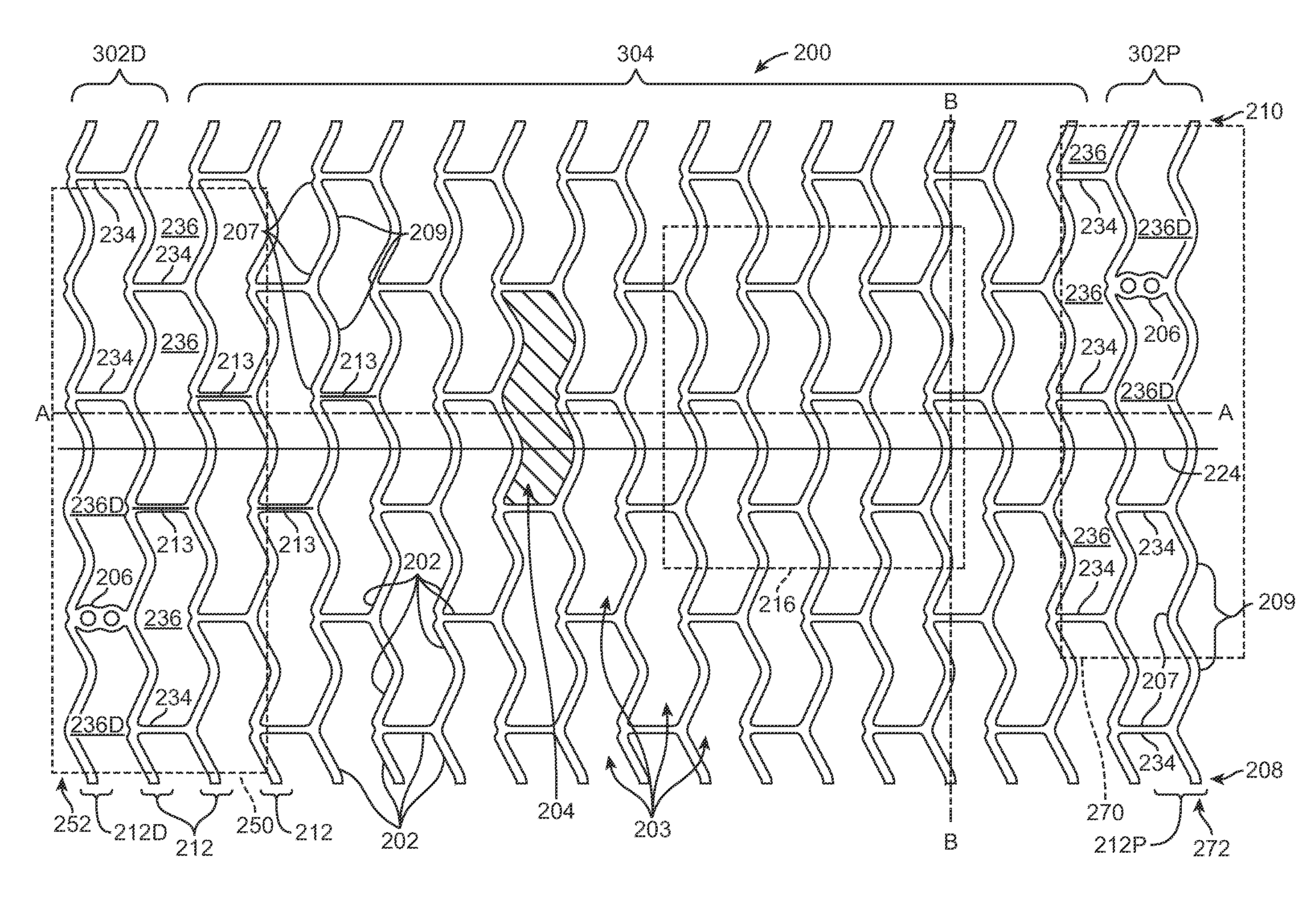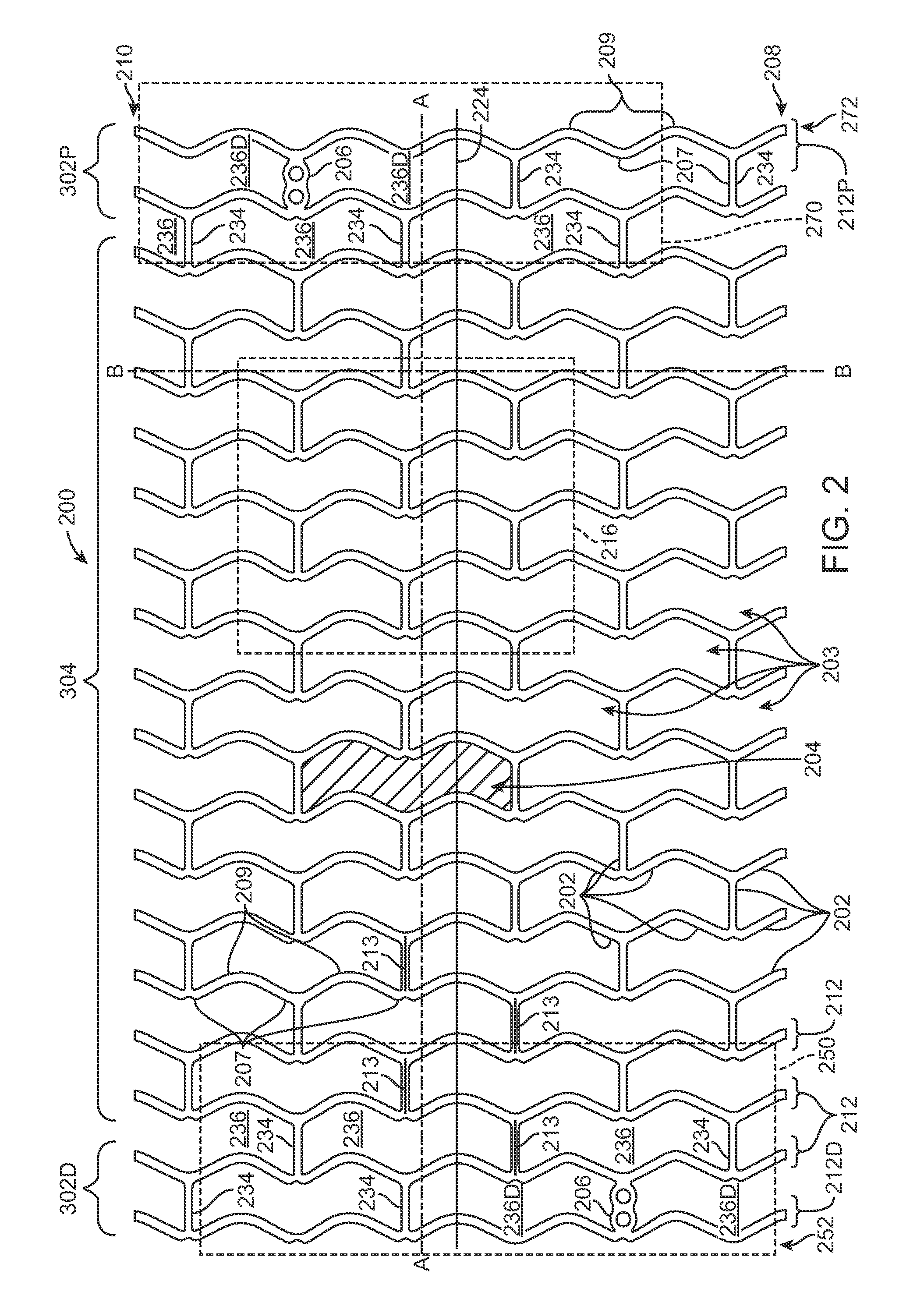Polymeric Stent
a polymer stent and stent technology, applied in the direction of prosthesis, buttons, blood vessels, etc., can solve the problems of strut cracking or fracture during crimping, relatively high recoil of polymer stents, and potentially low radial strength
- Summary
- Abstract
- Description
- Claims
- Application Information
AI Technical Summary
Benefits of technology
Problems solved by technology
Method used
Image
Examples
Embodiment Construction
[0036]Referring now in more detail to the exemplary drawings for purposes of illustrating embodiments of the invention, wherein like reference numerals designate corresponding or like elements among the several views, there is shown in FIG. 1 a tube 100 that serves as a stent precursor construct in the sense that further processing is performed on the tube before the pattern of stent struts is cut formed from the tube.
[0037]After further processing of the tube 100, a pattern of struts is formed on the resultant tube by chemical etching, mechanical cutting, or laser cutting material away from the tube. Representative examples of lasers that may be used include without limitation excimer, carbon dioxide, YAG, and ultra fast lasers. The tube 100 is cylindrically-shaped with an outside diameter 105, an inside diameter 110, an outside surface 115, and a central axis 120.
[0038]The tube 100 is formed by extrusion of poly(L-lactide) (“PLLA”). In other embodiments, a tubular precursor constr...
PUM
| Property | Measurement | Unit |
|---|---|---|
| Angle | aaaaa | aaaaa |
| Angle | aaaaa | aaaaa |
| Strength | aaaaa | aaaaa |
Abstract
Description
Claims
Application Information
 Login to View More
Login to View More - R&D
- Intellectual Property
- Life Sciences
- Materials
- Tech Scout
- Unparalleled Data Quality
- Higher Quality Content
- 60% Fewer Hallucinations
Browse by: Latest US Patents, China's latest patents, Technical Efficacy Thesaurus, Application Domain, Technology Topic, Popular Technical Reports.
© 2025 PatSnap. All rights reserved.Legal|Privacy policy|Modern Slavery Act Transparency Statement|Sitemap|About US| Contact US: help@patsnap.com



